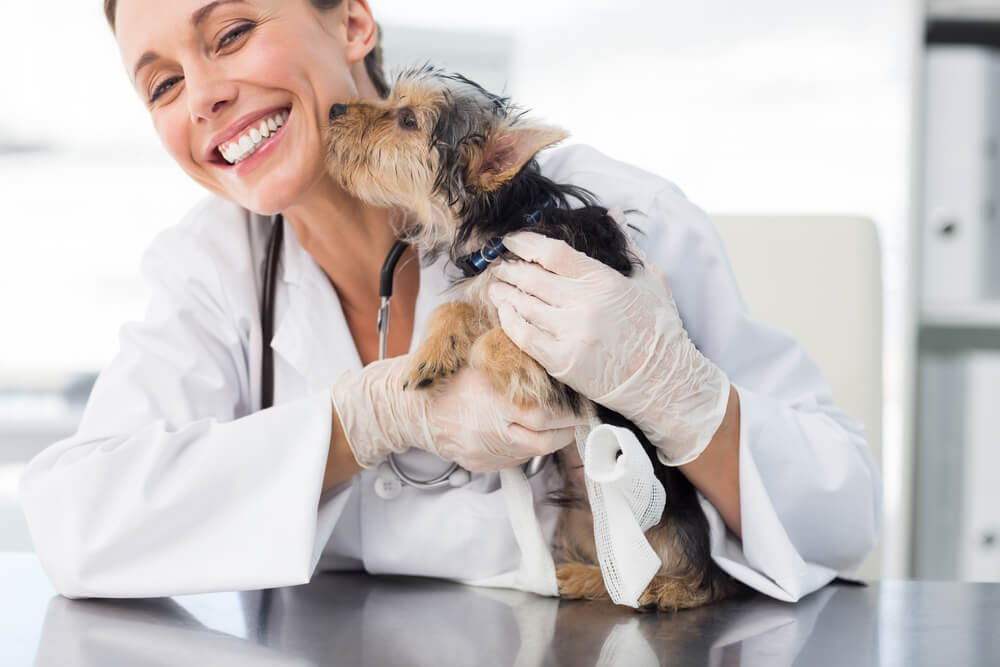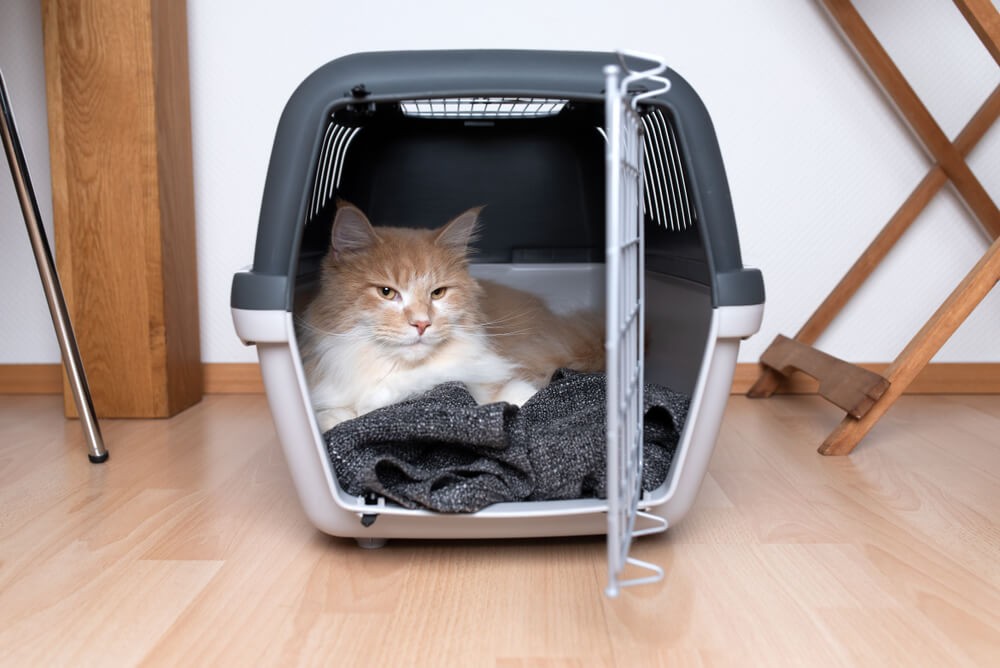
That many dogs and cats loathe visiting the veterinary hospital is no secret. And while we cannot blame them—we aren’t keen on visiting the doctor, either—we can take steps to improve their comfort, and minimize the dangerous health effects of stress in pets.
Although the veterinarians, technicians, and staff at Towne Centre Animal Hospital strive to make your pet’s experience as stress-free as possible, we can’t do it alone. To effectively change your pet’s mind about veterinary care, training begins at home.
How stress impacts your pet’s health
Stress reactions, including fear and anxiety, can alter your pet’s examination results, creating an inaccurate clinical picture, and potentially causing misdiagnosis. While most veterinarians consider stress as a variable when reviewing lab work results or exam findings, they can ultimately only assess what they see.
Chronic or prolonged stress and anxiety, which may arise from frequent veterinary appointments or hospitalization, can have a lasting impact on pets, and result in the following medical conditions:
- Delayed healing
- A weakened immune system
- Altered appetite
- Chronic diarrhea
- Stomach ulcers
- Urinary tract infections
- Behavior disorders
Recognizing fear, anxiety, and stress in your pet
While vocalizing, lunging, hiding, or aggressive pets are obviously distressed, subtle stress signs are commonly overlooked or misunderstood. Lesser known stress signs in pets include:
- Lip licking
- Yawning
- Abnormally slow movements
- Restlessness or excitability
- Extraordinary stillness and rigidity (i.e., “statue mode”)
- Failure to respond to basic verbal cues or name
10 steps to prepare for a stress-free veterinary visit
If untreated, your pet’s fear, anxiety, and stress will likely escalate over time. If we have described your pet above, take action now, with these easy at-home tips:

- Ask about pre-visit medication for your pet — If your pet has previously had severe reactions to the veterinary hospital, such as defensive aggression or extreme fear, talk to your veterinarian about prescribing pre-visit anti-anxiety medication. Motion sickness and travel-related anxiety can increase a pet’s fear, anxiety, and stress. If your pet gets car sick, ask about anti-nausea medication, and withhold food for several hours prior to your appointment.
- Write down any questions you have for the veterinarian — If you’re focused on your pet’s behavior, you can easily draw a blank when the veterinarian asks if you have any questions. Get the most from your pet’s appointment by keeping a written list, or a list on your phone, as well as reminders for any medication, diet, or preventive refills your pet needs.
- Schedule your pet’s appointment during quieter hours — Animal hospitals can be busy, noisy, and chaotic. Sensitive pets may be overwhelmed by the constant stimuli, before the appointment actually begins. When scheduling your pet’s appointment, request a quieter time, which is typically during the morning hours.
- Make your pet’s carrier a home away from home — Place the carrier near your pet’s favorite spot. If possible, remove the top half and door, and add a cozy bed. Spray the bed with a comforting pheromone, to attract and calm your pet. Randomly toss treats, toys, or catnip inside, to encourage regular visits. Gradually reassemble the carrier, and feed your pet their meals inside.
- Acclimate your pet to travel — Secure your pet in a crate, carrier, or seat belt, and take brief non-veterinary car trips. Your first trip could be only as far as the mailbox. Be persistent, and keep the trips short and fun. Take your dog to the park, or pet supply or home improvement stores. Cats may prefer a simple round-trip cruise.
- Help your pet learn to love being handled — Replace negative memories with high value food rewards by pairing touch with treats. Work in short sessions when your pet is relaxed and hungry, to teach them that touch equals treat. Start with neutral areas (i.e., chest, shoulder), and graduate to more sensitive regions, rewarding every touch.
- Let your pet try out new treats — For non-fasting appointments, we encourage using food rewards throughout your pet’s visit. Using familiar treats during your pet’s visit will reduce the chance of a gastrointestinal upset. Test several high value options at home to see what your pet prefers—see this list for recommendations.
- Teach your pet how to station — Stationing (i.e., place training) is a powerful and easy behavior that rewards pets for going to a specific location, such as a blanket, rug, or platform. Stationing behaviors teach pets to focus, build their confidence, and transfer well to the weight scale, exam table, or examination room floor.
- Teach your pet to love a muzzle — Muzzles protect everyone, including your pet. If your pet requires a muzzle, use positive reinforcement training to teach them that their muzzle is an opportunity for great rewards. Basket muzzles are the best option, because they are less threatening, and allow dogs to eat, drink, and pant.
- Bring your pet in for a happy visit — Finally, don’t be a stranger! When you’re ready to step out with your pet with their new low-stress training skills, stop by Towne Centre Animal Hospital for a happy visit, where your pet simply comes in for a quick hello, and receives tasty treats.
Change how your pet feels about their veterinary experience, and improve your shared bond with these easy exercises. If you practice them consistently, with patience and great rewards for your pet, we may not recognize your self-assured, stress-free pet at their next appointment!
To discuss pre-visit medications, or find out what treats are suitable for your pet’s medical condition, contact Towne Centre Animal Hospital.
